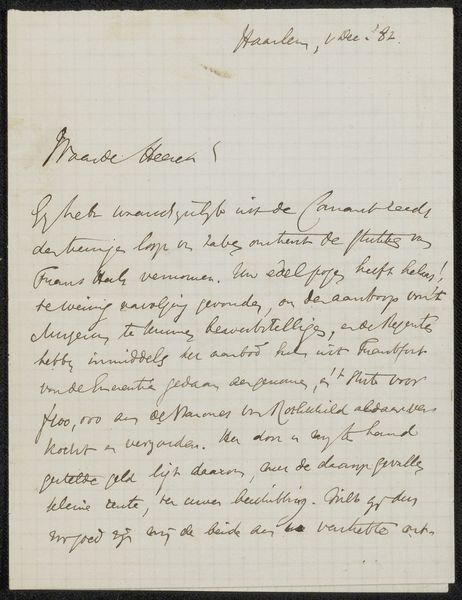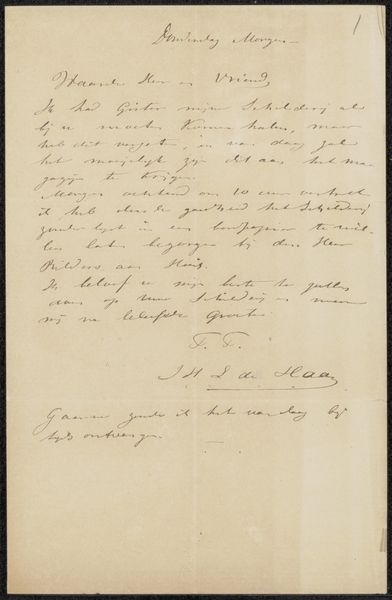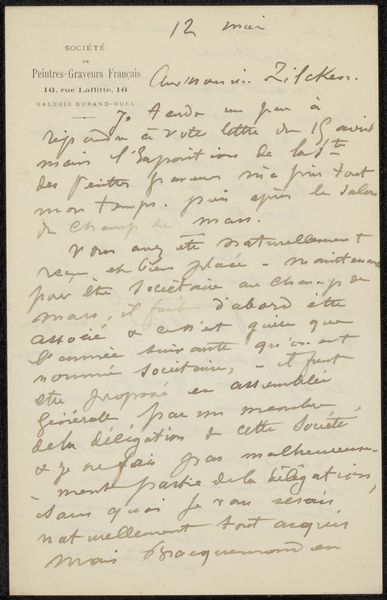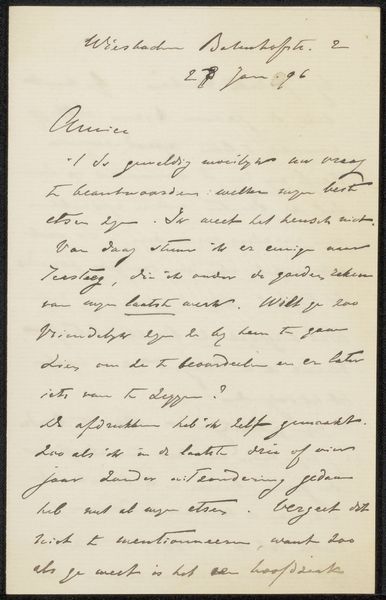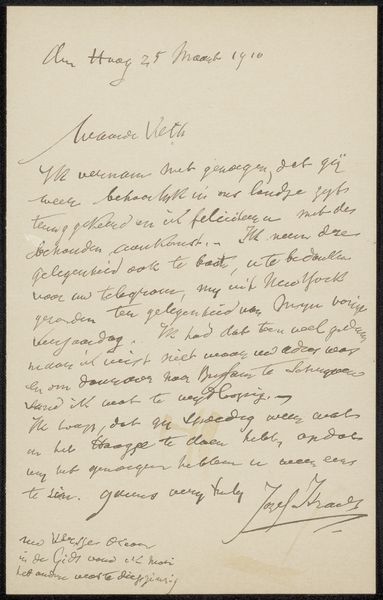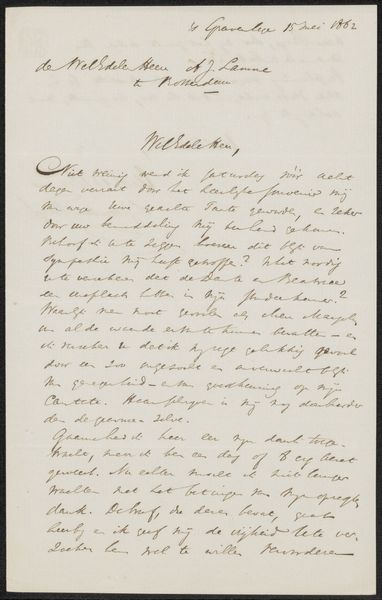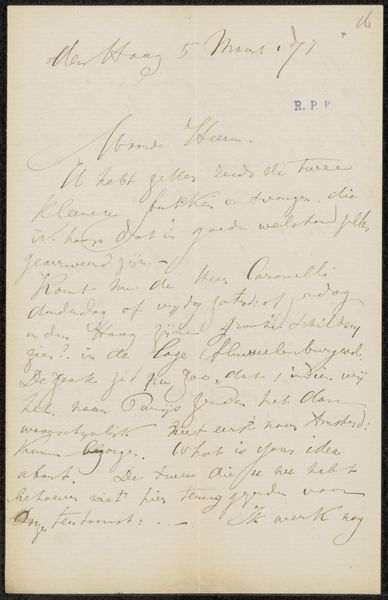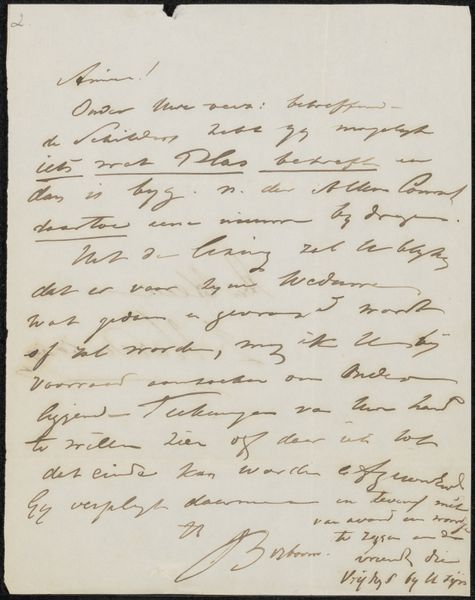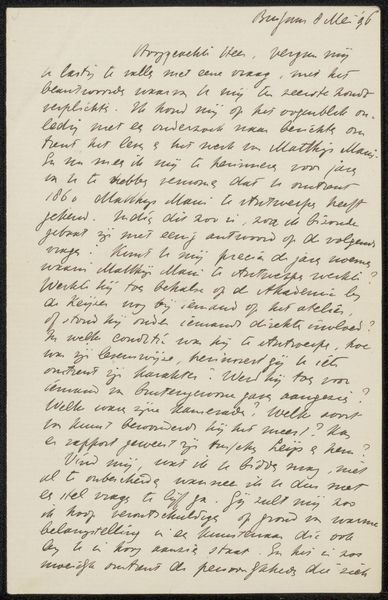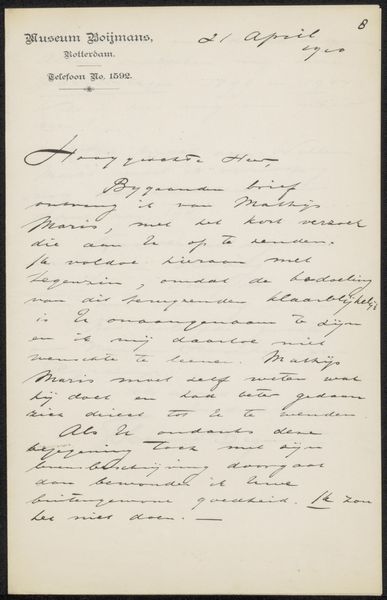
drawing, paper, ink
#
drawing
#
paper
#
ink
Copyright: Rijks Museum: Open Domain
Editor: We're looking at "Brief aan Philip Zilcken," possibly from the 1890s, created by Eduard Karsen. It's an ink drawing on paper. Something about the handwriting gives it a really personal, intimate feel. What does this piece evoke for you? Curator: It is tempting to see such work on paper, this personal letter, through the lens of institutional validation. Who decides a personal note merits gallery space? Was Zilcken an artist of repute to grant such relevance? It asks us to consider the political underpinnings of art historical record-keeping and preservation. How were such records deemed 'worthy' in the past? What unseen labour might be behind their continued presence in museum archives? Editor: That's fascinating! I hadn’t considered the role of power structures in such a personal piece. Curator: Yes, consider who had the power to preserve and elevate such a simple piece of personal communication and how such institutions dictate what stories get told, and whose voices are amplified within the grand narrative of art history. We might question why *this* letter was deemed worthy, and consider other, unarchived expressions and communications. What value judgments are embedded in their initial selection and continuing curatorial support? Editor: So, in this case, the letter itself is almost secondary to what its presence in a gallery reveals about art and historical canons? Curator: Precisely! The very act of its exhibition politicizes what might seem like a simple note. It becomes an artefact reflecting societal biases and institutional frameworks. Editor: I will look at art so differently now! Curator: Hopefully, this conversation shows there's always a richer story woven into the very existence of artwork being displayed, especially with unassuming objects such as letters.
Comments
No comments
Be the first to comment and join the conversation on the ultimate creative platform.


